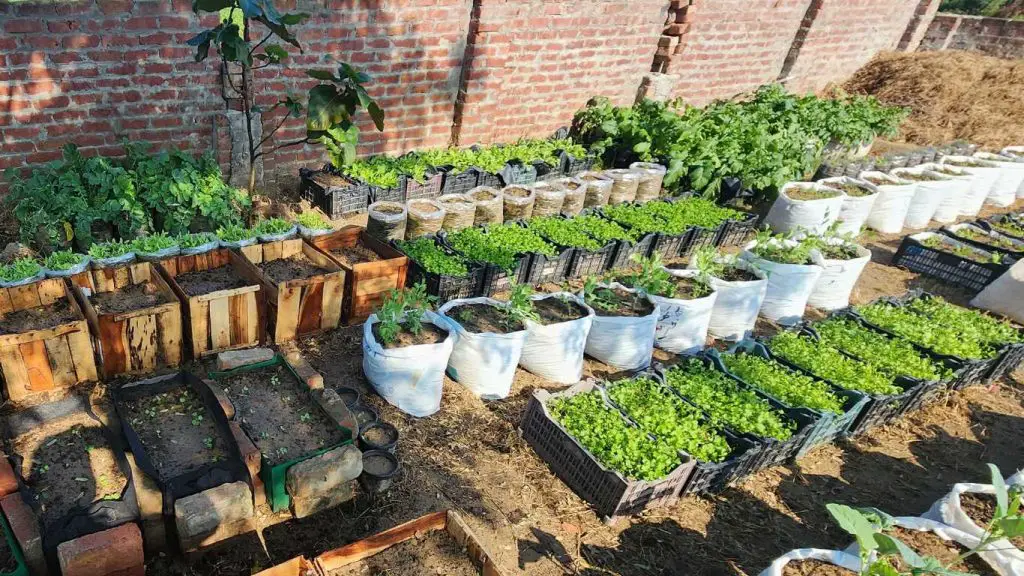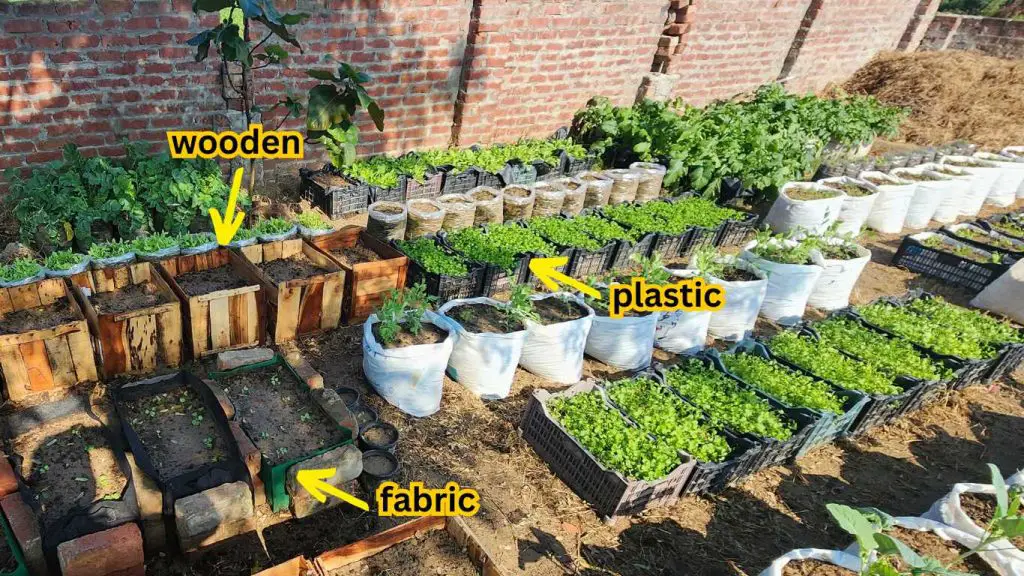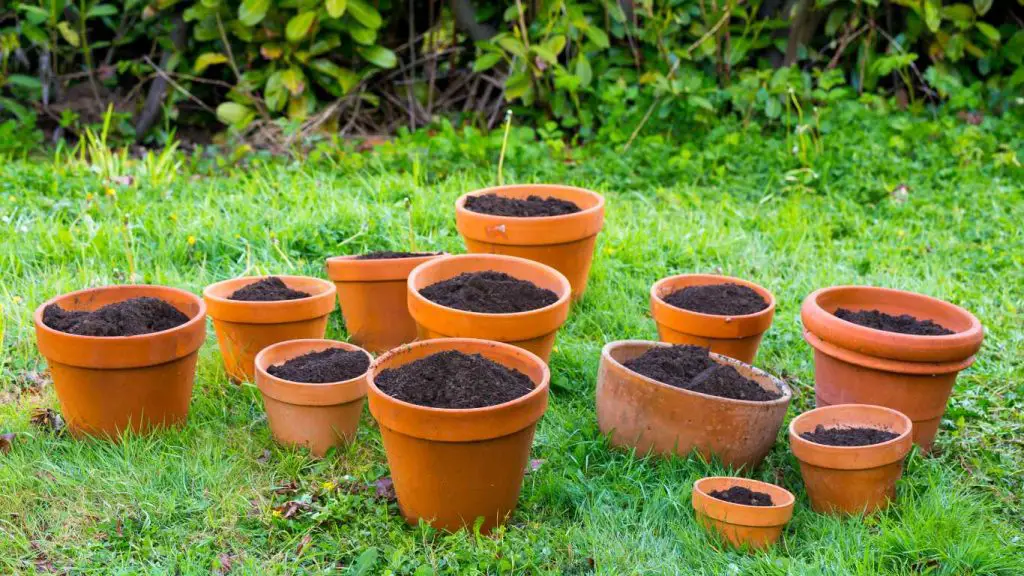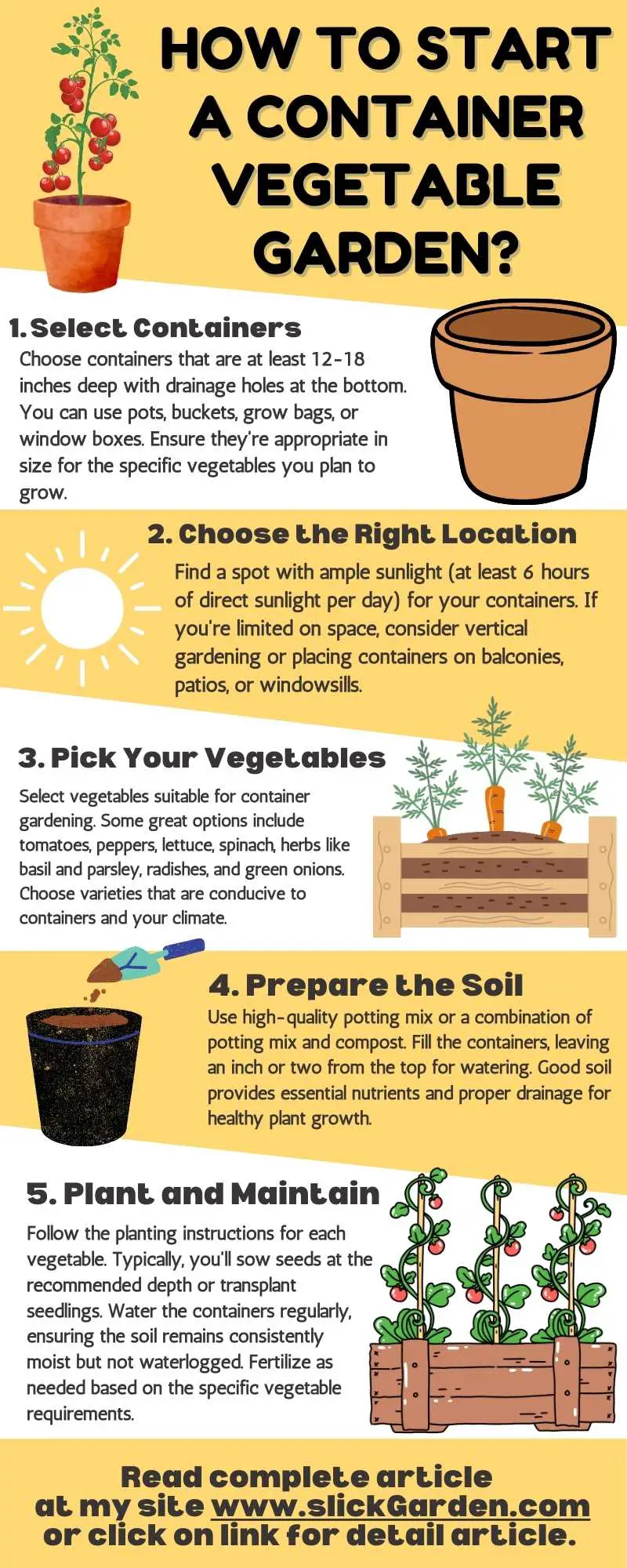If you don’t have a lot of yard space, container gardening is a terrific way to grow vegetables! Check out our article on vegetable container gardening for beginners if you are confined to a patio, balcony, driveway, or rooftop, or if you have a little amount of gardening space!

The ability to move plants to ideal environments is one benefit of container gardening. Container gardening is a terrific method to use the space you have, whether it’s a few pots on your driveway or in a balcony corner.
You have more control over your growing process when you use container gardening. Making sure the right amount of nutrients is in the right proportion will help you create the ideal growing medium. Your gardening chores will become more efficient as a result of the decrease in weed growth and perhaps the elimination of the need for weeding entirely. Harvesting is easy, and the procedure is more streamlined.
Things To Consider Before Choosing A Pot
Material: Clay, terracotta, plastic, ceramic, wood, metal, and other materials are used to make pots. Each has benefits and drawbacks. For example, plastic pots hold moisture better than clay pots, yet clay pots are porous and allow greater aeration and water drainage.
Size: Verify that the pot fits the size and root system of the plant. It ought to have adequate room for the roots to spread out without feeling crowded.
Drainage: In order to avoid root rot and waterlogging, proper drainage is essential. Seek out pots that have holes for drainage, or make plans to add ones if none exist.
Climate: Freezing temperatures can have an impact on certain materials, such as terracotta. When selecting a pot, take local weather conditions into account.
Aesthetics: Of course, take into account the appearance as well! Pick a pot that goes with your style and looks good in your landscape.
What Type of Pot?

Wooden pots are known for their aesthetic appeal and ability to enhance different garden styles. These products have a natural appearance and seamlessly integrate with outdoor environments. Nevertheless, wooden pots may deteriorate over time when exposed to moisture and may require liners to protect against soil contact, which can lead to rot.
Fabric pots crafted from breathable materials such as felt or fabric, pots offer optimal aeration and drainage for plants. By enabling air to reach the roots, they help prevent root circling and encourage healthier growth. Fabric pots are easy to carry and transport. However, they may dry out faster than other materials, which means they need to be watered more often.
Plastic pots are known for their durability, lightweight design, and wide range of sizes and shapes. Plastic pots have the advantage of retaining moisture more effectively compared to other materials, which means you won’t have to water them as often.
Additionally, they have a lower likelihood of breaking and are generally more budget-friendly. On the other hand, fabric or wooden pots offer better breathability compared to other options, ensuring proper root health as long as drainage is sufficient.
Terra-cotta pots are crafted from baked clay and are renowned for their timeless appearance. These materials have a porous nature that allows for the passage of air and moisture, providing potential benefits for plant roots.
On the other hand, due to their porosity, these plants may dry out faster, necessitating more regular watering. Additionally, they may be susceptible to cracking in freezing temperatures.
The Best Soil for Container Gardening

For plants to thrive, it is essential to have soil that is in optimal condition. For optimal growth and a bountiful harvest, it is important to provide plants in containers with the necessary nutrients, proper aeration, and effective drainage.
Avoid using soil from the garden. Many garden soils are heavy, prone to waterlogging and compaction, and can host diseases and insects. Instead, opt for a “soilless” potting mix that is specially designed for container gardening. The drainage of this product is efficient and it is lightweight. Additionally, it is free from any diseases or pests.
Soilless potting mixes typically include a blend of peat (or coconut coir), perlite, and vermiculite, along with additional additives like ground limestone and granulated fertilizers to supply nutrients. Here’s a straightforward method to create your soilless mix in the comfort of your home.
Do you have compost? Adding humus to your container mix can greatly benefit your plants. It provides essential nutrients and helps to improve the texture of the media.

Providing the Right Light and Temperature
Fruiting vegetables such as tomatoes and peppers thrive in full sun, requiring a minimum of six hours of direct sunlight daily. However, some gardeners may overestimate the amount of sunlight a particular area receives.
To ensure the success of your vegetables, it is important to have a precise evaluation. Make sure to regularly monitor the location throughout the day to determine the duration of direct sunlight in the area where you plan to place your vegetable container garden. Another option is to utilize a sun calculator for a more precise evaluation.
In hot climates, it may be necessary to provide shade for your plants during the afternoon to prevent them from overheating. Additionally, it is advisable to avoid the use of metal or dark-colored containers as they have the potential to generate excessive heat, which can adversely affect the roots of your plants.
Watering Your Container Garden
Ensuring the well-being of your container garden requires regular watering. The frequency of watering is influenced by various factors such as the type of plant, the size of the container, and the weather conditions.
In order to achieve optimal results, it is recommended to follow a regular watering routine. Make sure your containers have proper drainage to avoid waterlogging.
Check the soil moisture by gently inserting your finger about an inch deep. If it feels dry, it’s time to water. Watering in the morning is a great way to prevent water loss through evaporation and ensure that plants can take in moisture before the temperature rises. Opt for a watering can or a gentle hose attachment to prevent any disturbance to the delicate roots.
One option to consider is adding a layer of mulch to the soil surface. This can help retain moisture and minimize evaporation. When the weather gets hot, it’s important to water your plants more often.
Just be careful not to overwater and suffocate the roots. When it’s raining, it’s important to check the moisture level of the soil before watering. This is because too much water can lead to root rot.
Regularly observing your plants allows you to gain a better understanding of their water requirements. Your container garden will flourish with careful attention to detail and consistent care.
Feeding Your Plants
Plants require nourishment in order to flourish, and this nourishment comes in the form of fertilizer. To ensure optimal growth, it is recommended to incorporate fertilizer into your soil multiple times during the growing season, following the instructions provided on the label. Gardeners often incorporate organic, granular fertilizer into the containers prior to planting.
Additionally, on a regular basis, you can incorporate diluted liquid fish emulsion or liquid seaweed into your routine to provide the necessary nutrients for your plants. One option for increasing nutrient levels is to create or purchase compost, which can effectively nourish the plants.
Vegetables for Container Gardens

Container gardens provide a flexible option for cultivating vegetables. Choose smaller tomato varieties that are perfect for growing in containers, like Tiny Tim or Patio Princess.
These compact plants are well-suited for smaller spaces. Peppers such as Patio Snacker or Mini Bell are also great options. Container gardening is a great option for growing leafy greens like lettuce, kale, or spinach, as well as herbs like basil, parsley, and chives. Choose smaller root vegetables such as radishes or baby carrots.
So there you have it, a comprehensive guide to help you get started with your very own container vegetable garden! Whether you have years of experience in gardening or are just starting out, we hope this video has given you the motivation and knowledge to begin this fulfilling and satisfying journey.
